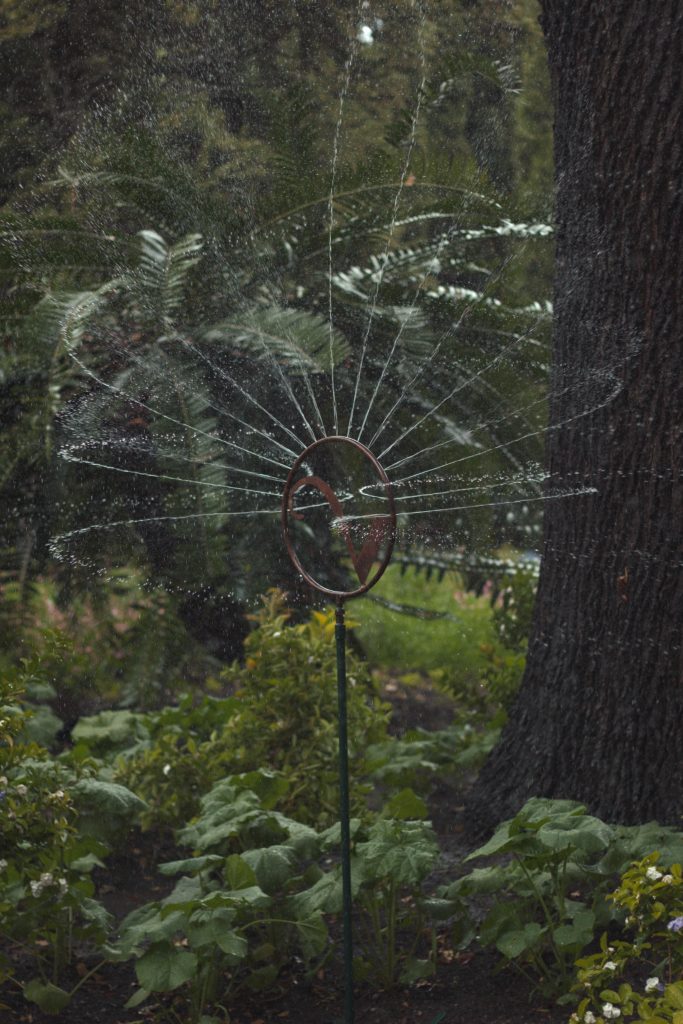Proper Lawn Irrigation
While it is just starting to warm up here in Michigan- it is important to understand how to deal with the upcoming warmer months and how to properly keep your lawn hydrated. We are all familiar with how hot and dry the Summers can get so proper lawn irrigation is a must. Lawns are required at least one inch to one and a half inches of water per week from either rain or irrigation. When watering an established lawn, it is typically recommended to water until the top six to eight inches of soil is wet. You can get this done by a single watering session or you can divide into two waterings throughout the week- just make sure not to overwater your lawn. Below are some tips to help you better irrigate your yard.
The Best Time to Water Your Lawn
It is a great standard practice to water your lawn two to three day a week to keep it healthy and green. If you ever find your lawn has taken on a grayish color or appears to be dull green, you are being told that it needs water. You can also check your lawn by walking on it: if your footprints do not disappear quickly, it is because the grass blades do not have the needed moisture to spring back. The best time to water your lawn is in the morning before the hottest part of the day to keep the water from evaporating before it can soak in the soil. If you water too late in the day you are not giving it enough time to soak in before the night’s cooler temperature arrive.

How to Irrigate Shady Lawns
As you might know, or not, grass in the shady areas do not need as much water as the rest of the lawn. In fact, during dry spells, you can see what parts of your lawn are protected by the shade because they are still healthy and green. Grass directly under trees, however, may require more watering because the tree is taking some of that water and posing as competition. Make sure you are watering deeply to help encourage deep root growth.
What Type of Sprinklers Should You Use?
Proper lawn irrigation can be taken care of through various types of sprinklers out there, they are designed to achieve certain results in different parts of your lawn.
- Rotary Sprinklers– these are the most commonly used sprinklers on golf courses and athletic fields. Rotary sprinklers spin and water in a circular pattern. Great for small yards, slopes, or hills.
- Oscillating Sprinklers– these are the best type of sprinkler for small-to-medium-sized lawns. This traditional sprinkler waters in a rectangular pattern and can cover large areas of the lawn.
- In-Ground Sprinklers– this is an expensive option but will give you the piece of mind of never having to worry about when and how often to water your lawn. Great for scheduling proper irrigation for your lawn.
- Drip Emitters– this option is great for flower beds, vegetable gardens, and container plants. Tiny holes slowly drip water directly into the soil, so plant roots get the water they need and do not become overwatered.
Watering Hills and Slopes
Watering these types of areas can be tricky. For hilly landscapes where the water tends to run downhill before being absorbed in the soil, try wetting the area for shorter periods of time. After water has dried come back and apply another round of water.
Soak the Soil
When you water your lawn, you need to make sure it is absorbing enough water to properly keep hydrated. Properly irrigated soil needs to be soaked six to eight inches below the surface. This is deep enough for the roots to soak up the water to encourage root growth and help out during dry spells. As an added precaution, you can raise your lawnmower blades an inch or two. The taller grass will prevent evaporation, keeping the soil moist longer, and preventing weeds for taking over.
Clark’s Landscape offers Lawn Services in and around Grand Rapids, Michigan. If you are ready to take your lawn to the next level and have it look better than before- Give us a call!
